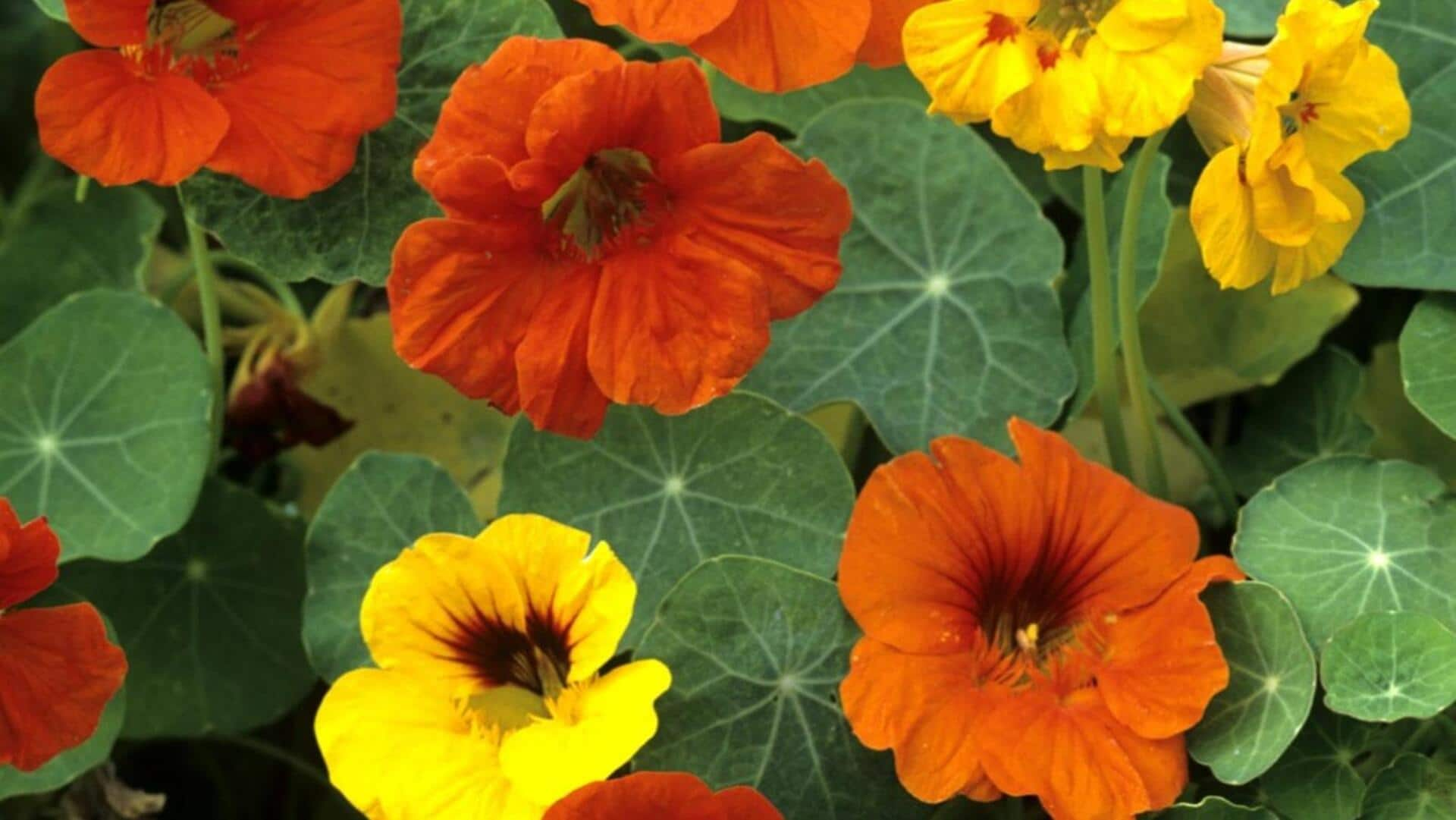
5 must-have edible flowers
What's the story
Edible flowers have been a part of culinary traditions for centuries, giving unique flavors and vibrant colors to dishes. For those mastering vegetarian cooking, adding edible flowers can take the dining experience to a whole new level. These beauties not only amp the visual appeal of a dish but also add their own taste and nutrition. Here are five must-have edible flowers to make your vegetarian kitchen a haven of creativity and flavors.
Peppery flavor
Nasturtiums: A peppery delight
Nasturtiums are famous for their bright colors and peppery taste, making them a common pick in salads and garnishes. Both the leaves and flowers can be consumed, giving a slightly spicy kick similar to watercress. They are high in vitamin C, which promotes immune health. Nasturtiums can be used fresh or pickled, adding versatility to dishes ranging from appetizers to main courses.
Vibrant color
Calendula: The poor man's saffron
Calendula petals provide a saffron-like hue to dishes, without the exorbitant price of saffron itself. Nicknamed "poor man's saffron," calendula has a mild, peppery taste that goes well with soups, stews, and rice dishes. It is also famed for its anti-inflammatory properties, owing to its high flavonoid content. Calendula can be used fresh or dried, making it a versatile ingredient in any kitchen.
Fresh taste
Borage: Cucumber-like freshness
Popularly known for its cucumber-like taste, Borage adds freshness to salads and drinks alike. The star-shaped blue flowers are stunning to look at and provide a cooling effect when put into summer drinks or cool soups. Rich in gamma-linolenic acid (GLA), an omega-6 fatty acid good for skin, Borage's leaves can be cooked like spinach or used raw as garnishing.
Sweet flavor
Violets: Sweetness with nutrients
Violets add a hint of sweetness and nutrients like vitamins A and C to desserts or salads. Their soft purple flowers make them perfect for garnishing cakes or giving syrups a floral flavor. Traditionally, violets have also been used in herbal remedies for their soothing effect on respiratory diseases like cough and cold.
Versatile use
Pansies: Versatile beauty
Pansies are available in a range of colors, from deep purples to bright yellows. They provide a mild, grassy flavor that is appropriate across cuisines, including Asian-inspired dishes where subtlety is key. Rich antioxidants found in these blossoms help fight oxidative stress. This improves overall wellness when consumed regularly, be it raw on top of leafy greens or stir-fried with tofu-based entrees.